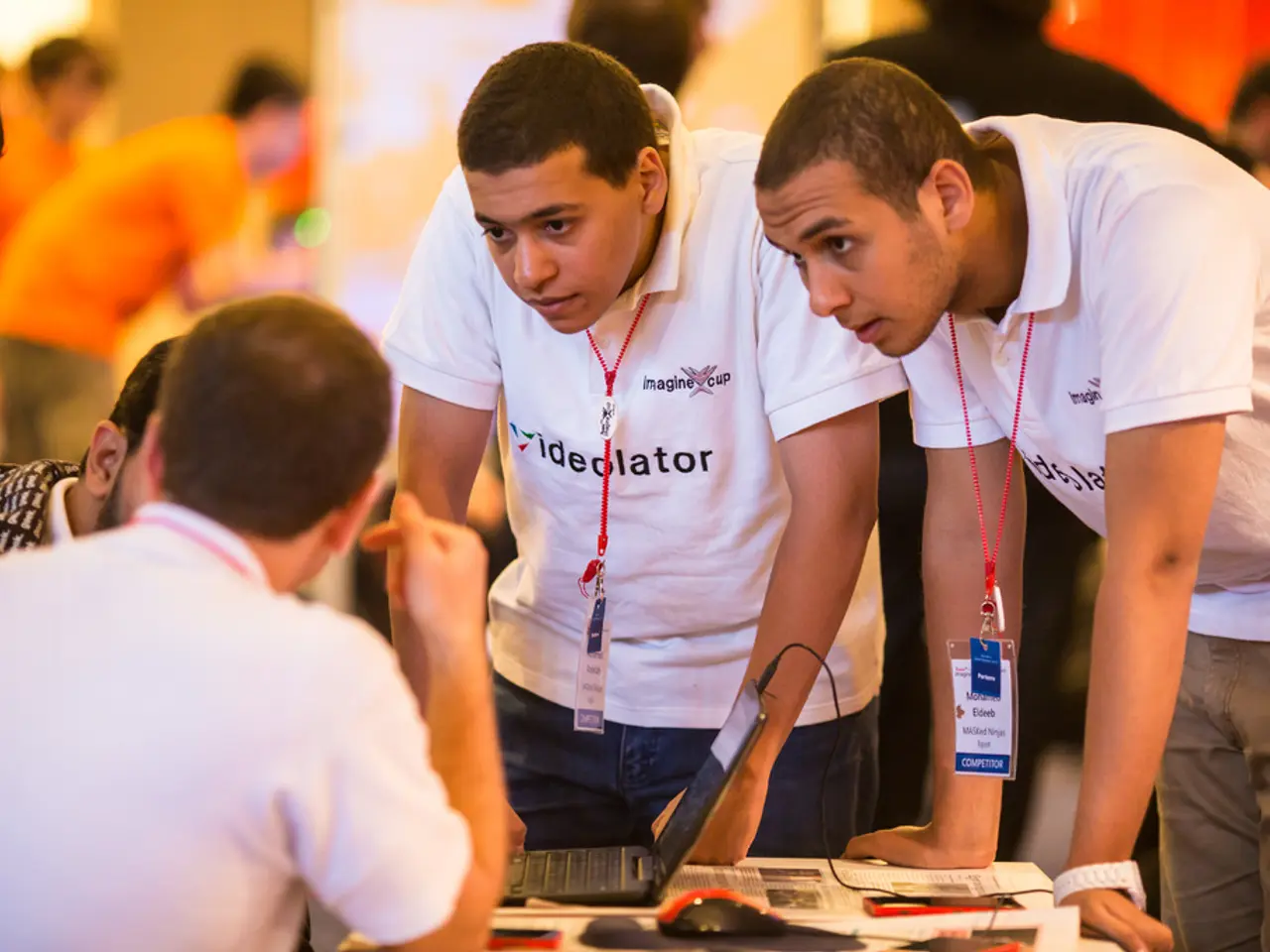Guide on Incorporating Via-in-Pad for PCB Structural Design and Production Processes
Via-in-pad technology, a significant advancement in Printed Circuit Board (PCB) design, offers several benefits that make it particularly advantageous for high-density, high-frequency applications such as RF modules. This innovative approach places vias directly in component pads, reducing lead lengths and inductance for improved high-frequency signal integrity.
One of the key advantages of via-in-pad technology is the enhanced high-frequency performance. By minimising lead inductance due to the direct via placement beneath surface mount pads, it ensures better electrical performance, especially at higher frequencies.
Another advantage is the increased PCB real estate efficiency. The reduced lead lengths and smaller via sizes allow for more compact layouts and higher component densities, making via-in-pad technology a valuable tool for creating smaller, more efficient circuit boards.
Improved thermal and electrical connectivity is yet another benefit. The direct connection from the component pad through the via to internal or opposite PCB layers ensures better heat dissipation and electrical conductivity, improving the overall performance of the circuit board.
However, via-in-pad technology is not without its drawbacks. The manufacturing process for via-in-pad is more complex and costly due to the requirement for via filling (often with conductive or non-conductive materials) and plating to create a flat surface suitable for soldering. This increased complexity can lead to higher fabrication difficulty, cost, and potential reliability concerns such as solder wicking or pad integrity issues.
Solder wicking, the flow of solder into the via barrel during soldering, can lead to poor joints or insufficient solder volume, posing a significant challenge during the soldering process. Additionally, repair and rework are more difficult due to the sensitive nature of the via-in-pad structure. Any damage can affect both the mechanical and electrical integrity of the circuit board.
Despite these challenges, via-in-pad technology is a step towards innovative PCB build techniques as electronic components continue to shrink in size. Effective via filling and proper PCB fabrication controls are critical to leveraging the benefits of via-in-pad technology while minimising its drawbacks.
While the use of via-in-pad technology is not a new concept in PCB engineering, it is worth noting that conventional PCB design employs solder mask as a plugging medium to prevent solder from being drawn into via cavities. In contrast, via-in-pad structures require a completely filled cavity to eliminate air entrapment and outgassing, and a precisely flat planar surface for reliable Ball Grid Array (BGA) attachment.
The pad diameter in via-in-pad generation is a major factor determining the manufacturing method used. When vias are not placed on pads, they don't need to be filled and don't need to be marked as via-in-pad in the online quoting tool. However, mechanically drilled via-in-pad holes need to be filled with epoxy, with the choice of epoxy depending on the coefficient of thermal expansion (CTE) of the via-in-pad fill material and the laminate used.
Laser microvias may be necessary when the remaining annular ring is insufficient after specifying the smallest drill diameter. For IPC Class 2 or Class 3, the pad size should be sufficient to allow for via diameter and manufacturing tolerances. Sierra Circuits' online offering can handle via-in-pad scenarios if the vias are at least 6 mils (.006′′) wide.
Via-in-pad routing guidelines include sticking to component manufacturers' recommendations, limiting microvias to one layer of the PCB, capping the non-component side with a solder mask, and avoiding leaving vias open unless necessary. Thermal pads, which don't require soldering and don't need to be counted as via-in-pad for online quoting, are also an important consideration in PCB design. Non-conductive epoxies are often chosen due to their closer match to laminate CTE and cost-effectiveness.
In conclusion, via-in-pad technology offers significant advantages in terms of improved electrical performance, miniaturization, and PCB real estate efficiency. However, its complex and costly manufacturing process, potential soldering challenges, and increased reliability concerns make it a double-edged sword in PCB design. Effective via filling and proper PCB fabrication controls are critical to leveraging the benefits of via-in-pad technology while minimising its drawbacks.
In the realm of data-and-cloud-computing, via-in-pad technology's enhanced high-frequency performance proves beneficial for controlling impedance, ensuring minimal signal degradation in high-speed data transmission.
Effective use of technology such as via-in-pad, with its increased PCB real estate efficiency, facilitates the compact design of Printed Circuit Boards, aiding in the production of smaller, more efficient devices for various applications.




